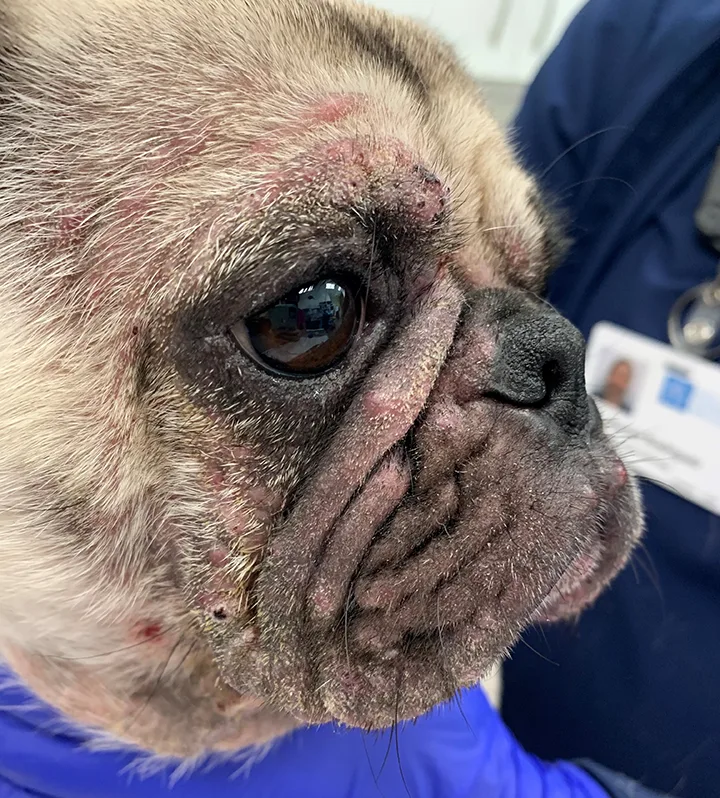Demodicosis & Secondary Bacterial Folliculitis in a Dog
Christina Monika Gentry, DVM, DACVD, Gulf Coast Veterinary Specialists, Houston, Texas
The Case
A 2-year-old spayed pug is presented for a 9-month history of minimally responsive pruritus and bacterial pyoderma. She had been presented at 8 months of age for similar clinical signs and treated with lokivetmab after a skin scraping tested negative for Demodex spp mites. Skin cytology and dermatophyte test medium culture were not performed at the initial visit. After receiving treatment, the patient was normal for 7 months (from late fall to early spring). At 15 months of age, she was treated with lokivetmab, oclacitinib, and topical chlorhexidine products for presumed atopic dermatitis. Her owner noted a gradual decrease in beneficial response to all prescribed medications.
On physical examination, the patient is bright, alert, and responsive with a BCS of 5/9. She has marked hypotrichosis and erythema on the face, chest, limbs, and paws (Figure 1); furuncles on the chin and face that contain hemopurulent exudate; and tan-colored crusting on the distal limbs and paws (Figure 2). Her itch scale on a visual analog is 9/10.
Results of skin cytology that used impressions from furuncle exudate reveal neutrophils, as well as intracellular and extracellular cocci-shaped bacteria (Figure 3). Trichogram and deep skin scraping reveal Demodex canis mites in all life stages (ie, egg, larva, nymph, adult; Figure 4).

FIGURE 1
Facial erythema, hypotrichosis-to-alopecia, and furuncles from demodicosis and secondary bacterial folliculitis
Which of the following drugs would be appropriate to treat this patient's demodicosis & secondary bacterial infection?
Prednisone
Hydroxyzine
Lokivetmab
Isoxazolines
Topical Chlorhexidine
Cephalexin
Enrofloxacin
Oclacitinib
Amitraz Dips
Ivermectin
Conclusion
Demodicosis is a common, but sometimes overlooked, dermatologic disease. The frequency of demodicosis may decrease over time with use of isoxazolines as routine flea and tick preventives. Significant clinical improvement (Figure 5) can occur in 1 to 2 months with miticidal therapy and resolution of secondary infections.

The patient one month after starting isoxazoline therapy and antibiotics based on culture and susceptibility testing. Significant hair regrowth, decrease in erythema, and resolution of furuncles can be seen.